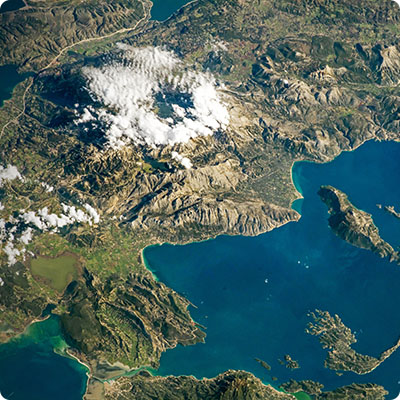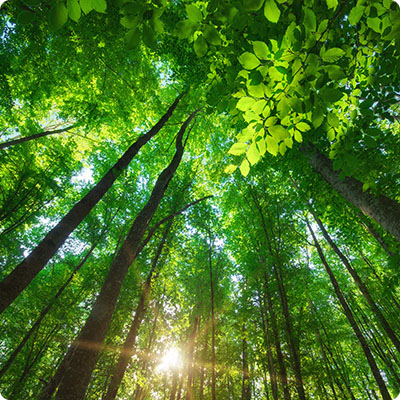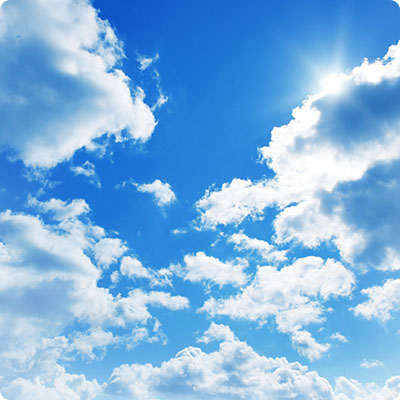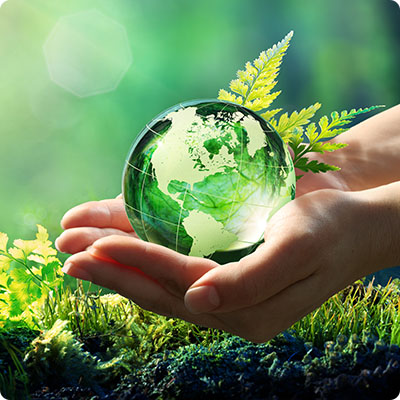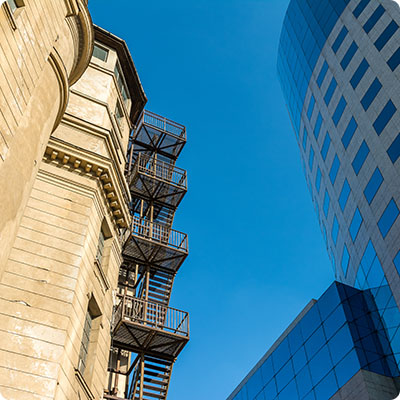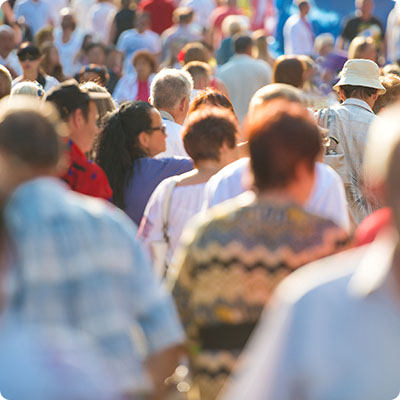Climate Borneo
Situated along the equator, the island has a tropical climate throughout its territory. Temperatures are constant all year round, fluctuating between 24°C and 33°C. It rains regularly, but rarely continuously. Borneo does, however, experience an important rainy season from October to March, with rainfall peaking between December and January. It's best to avoid scheduling your visit at this time, as heavy rainfall can create major problems: landslides, flooding, etc. Travel is difficult, roads are less safe or impassable in some parts of the island, and rivers carry debris from the forest, making navigation dangerous. Whatever the season, the forest has a markedly humid climate, and you'll need to bring the necessary clothing and equipment. At higher altitudes, the air becomes drier and temperatures cooler.
General
It's best not to have any specific expectations when it comes to Borneo's weather, as climatic conditions and seasons vary from one part of the island to another, and can also jump from one extreme to another several times during the day. It's not uncommon to go from overcast and stormy, with showers, to blue skies and blazing sunshine in the blink of an eye. Temperatures are pleasant and vary little throughout the year, averaging 27°C. Humidity, on the other hand, is relatively high, averaging 80% per year. When trekking or spending time in the jungle, it can get very hot very quickly, and you should always bring sufficient hydration (water, electrolyte-rich drinks, etc.). You should also take precautions against mosquito bites (body-covering clothing and anti-mosquito sprays) and protect yourself from leeches by wearing high socks. You may also have to cross small streams: suitable footwear is highly recommended.
Seasons by region
Sarawak. The northeast monsoon brings rain from November to February; the milder northwest monsoon occurs from March to October. The "dry season", which is actually the season with the least rainfall, runs from May to September. The state receives its highest precipitation of the year in December and January, and its lowest in June and July. Inland areas, on the other hand, experience heavy rainfall throughout the year, which is important to note if you want to stay in an Iban longhouse deep in the jungles of Batang Ai. In fact, Kuching and the central regions of the island have the highest rainfall levels in Malaysia, with around 230 days of rain per year. The coastal beaches near Kuching, on the other hand, enjoy a drier season from April to September. Temperatures are relatively constant throughout the year, with cooler temperatures at night in mountainous areas.
Sabah. This region of the island has less marked seasons than Sarawak. The rainy season runs from September to February, while the "dry season" extends from March to August. Rainfall is lower than in Sarawak, and the climate is stable all year round. Southern Sabah experiences lower rainfall than the rest of the state. The inland plains, however, retain the characteristics of an equatorial climate, with high humidity. The area around Kinabalu National Park experiences colder temperatures due to its high altitude, with nights and mornings that can be very cool. The climate of the small Sultanate of Brunei, landlocked between northeastern Sarawak and northwestern Sabah, is similar to that of Miri and Kota Kinabalu, the neighboring coastal towns.
Kalimantan. The five regions of Kalimantan have a humid tropical climate with slight variations. The land in the center of the island receives more rainfall than the areas to the south. The savannah plains of South Kalimantan have a drier climate than the rest of the state.
Storms and earthquakes
The island's northern coastline lies south of the Pacific Ring of Fire, an alignment of over 450 active and extinct volcanoes, some 40,000 km long, that surrounds the Pacific Ocean. This belt coincides with an alignment of tectonic plates and faults that can trigger earthquakes. While Borneo has no volcanoes, all the Greater Sunda Islands are subject to the effects of this belt, which produces relatively frequent tropical storms and hurricanes. On December 25, 1996, the state of Sabah experienced the terrible passage of tropical storm Greg, which left over a hundred people dead and many more missing... In 2015, a major earthquake, measuring 6 on the Richter scale, occurred in Sabah. It claimed the lives of around twenty climbers scaling Mount Kinabalu. Locals are convinced that this was the result of the unacceptable behavior of a dozen Western tourists six days before the earthquake. They undressed and urinated on the mountain, considered sacred by the indigenous peoples, provoking the wrath of the protective deities according to local beliefs.
When to go?
The best time to enjoy Borneo's natural wonders is from April to September, during the driest season. June, July and August are the most popular tourist months. If you're traveling at this time of year, you'll need to make your reservations in the national parks a few months in advance to avoid any disappointments. Festive periods (Ramadan, Chinese New Year) bring a large influx of domestic tourists, and soaring accommodation prices. Above all, avoid visiting the island at the height of the northeast monsoon season, in December and January. During this period, it's difficult to get around the island, both by road and by water. Check the weather forecast before you leave to make sure you can travel safely.
